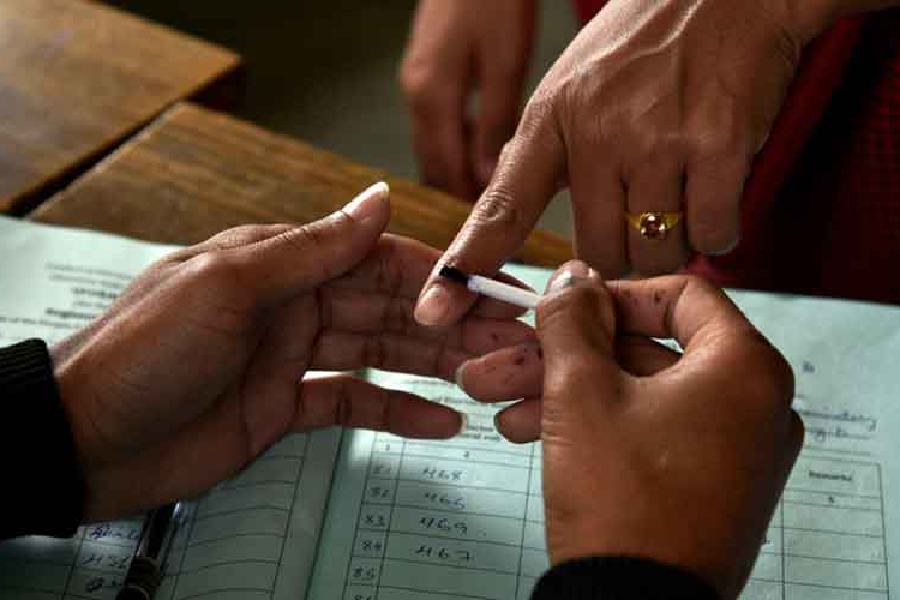 |
| A man sells diyas in Dhubri. Telegraph picture |
Dhubri, Oct. 21: The pottery industry in Assam is on the wane and only a small section of artisans is doing good business with value addition and product upgradation.
While some are using modern tools and have opted for the terracotta look — as done in Asharikandi terracotta cluster villages of Dhubri district — many artisans who are still using traditional methods of making lamps are facing an extremely bleak future.
Nearly 400 families of Dhubri district depend on the pottery industry.
Sibnarayan Kumhar, 74, a resident of the Karaipatty area of the town who has been engaged in traditional pottery industry since childhood, rued the decline in demand of their products over the last 10 years.
“There is hardly any demand for our products. Only a few thousand earthen lamps including bati (bowl) and kalash (urn) are sold during pujas. Sometimes the expenses are huge and we have to suffer losses. Still we are carrying on as what else can we do now? We are not financially sound enough to upgrade our products,” Kumhar said.
While echoing a similar concern over a massive drop in demand for pottery items, Suresh Kumhar, a resident of Nuliapatty of Dhubri town, said this cottage industry is fast fading and if the government did not come forward with financial assistance they would not survive.
“There was a huge demand round the year for matir chukka (earthen glass) which were extensively used in weddings and festivals with kol pat (banana leaves) which were entirely environment friendly, but now these items have been replaced by plastic plates and glasses,” Suresh said.
Dinanath Kumhar, another artisan of the town, said the demand for earthen lamps by and large remains the same, but their business is declining as they could not upgrade their earthen lamps as done in Asharikandi.
“On an average, 40 to 50 lakh traditional and common earthen lamps are sold in Dhubri district, of which I sell about 40,000 to 50,000. About 400 families engaged in production of pottery items including earthen lamps produce 4,000 to 5,000 earthen lamps. The demand for more lamps is being fulfilled by Asharikandi terracotta-designed lamp of Dhubri district and terracotta lamps made in Nabadwip of Bengal for the last few years,” Dinanath said.
Though terracotta lamps made in Nabadwip swamp the market in Dhubri every year before Diwali for the last few years, Asharikandi terracotta products hold the lion’s share of market despite their high prices.
Debdas Paul of Asharikandi said besides the common earthen lamp, they also sell five lakh terracotta lamps to wholesale dealers from Guwahati, Nagaon, Jorhat, Tinsukia, Dibrugarh and other districts of Upper Assam and Meghalaya.










